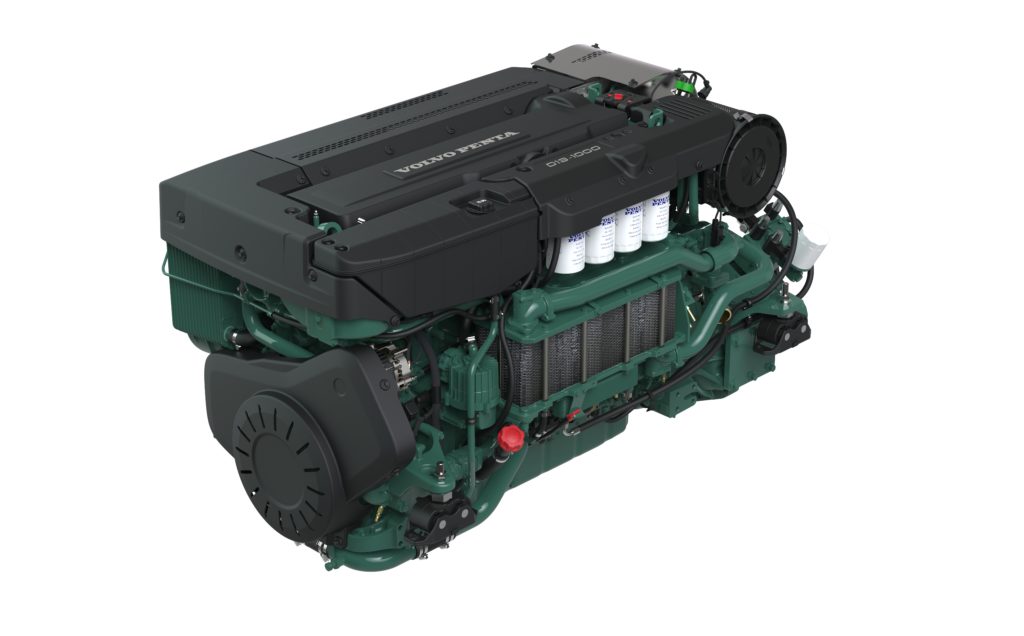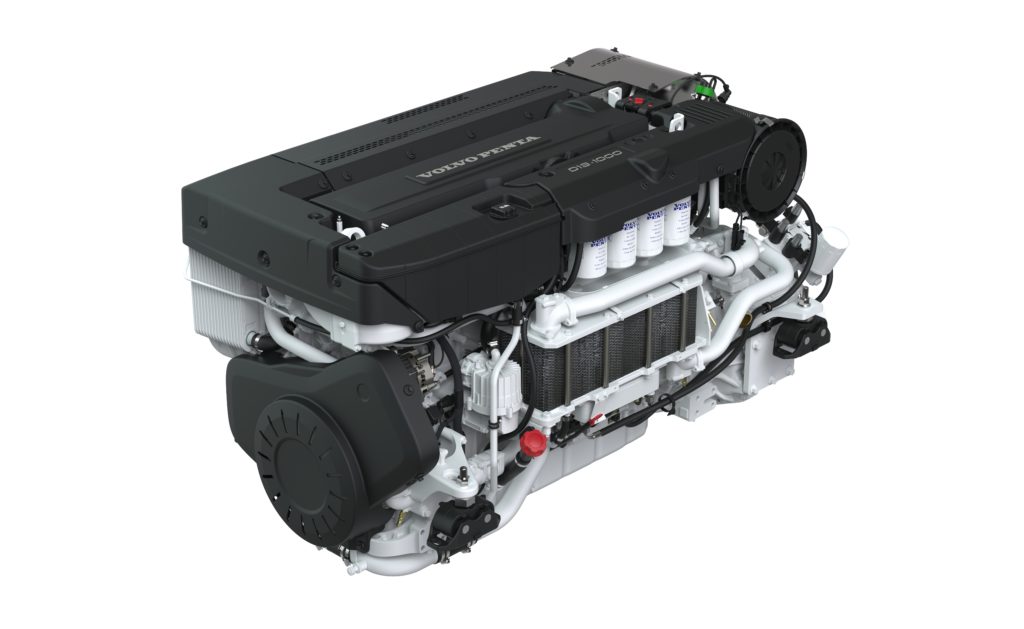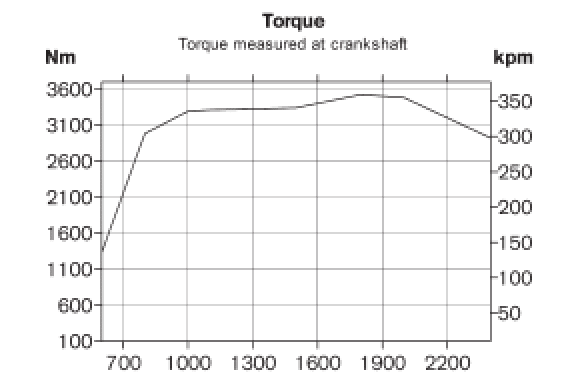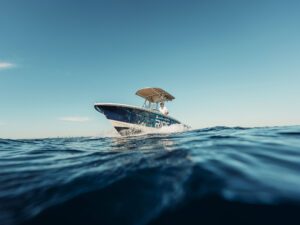Volvo Penta’s new D13 is the engine maker’s first foray into the 1000-plus horsepower recreational boating segment. The D-13 is suitable for boats up to a whopping 120 feet long. So what’s the scoop on this mega engine? To find out, we inspected the D13 in person with engineer, Jens Bering, Vice President of Marine Sales for Volvo Penta of the Americas.

Volvo Penta D13.
Let’s start with a point of clarification. The D13 is offered in two configurations. The inboard “version”, if you will, is the labeled the D-13 1000. It is also offered as the D13-IPS 1350. The difference in nomenclature comes from the fact that, when coupled to a Volvo Penta’s IPS drive, the boat into which the IPS system is installed will experience the performance equivalent of a 1,350 hp diesel inboard. Basically, since IPS features lower drag, having no shaft and struts, and forward-facing, dual-prop propsets for loads of blade area in a smaller diameter, it can deliver higher performance than the inboard equivalent. Boating’s tests over the years corroborate this relationship.

Inboard or IPS, the D13 is a 12.8 liter ( 781 cubic inches, for you old school motorheads), inline-6, that produces 1,000 horsepower at the crankshaft. It boasts a 131 mm (5.1 in) bore and a 158 mm (6.2 in) stroke. The maximum rated engine speed is 2400 rpm. It weighs 3,605 pounds as a bobtail ( with no gear).
Historically, a key characteristics of Volvo Penta diesel engines has been torque, and, according to Bering, the D-13 continues that tradition. The D13 produces near peak torque at just 1100 rpm, peaks at 1900 rpm and falls of at a very shallow angle from that engine speed to WOT. That shallow decline is what Bering described as a torque rise, stating that it is a design mandate that, ” every Volvo Penta diesel exhibit a torque rise in the cruising band of rpm.” What this means is, that, as horsepower decreases, torque increases.
In actual running-the-boat terms,consider a following sea scenario. The boat drives into the back of a wave. Power drops. But since torque increases, the boat climbs the backside with authority. At the helm, you may not have even needed to advance the throttle. This characteristic delivers a feeling of confidence and authority to the skipper. Especially, Bering adds, when coupled to the dual-propeller IPS drives: “ Its one of the best ways to get the torque from the engine actually into the water.”

Bering also maintains that reliability and durability are built in, evidenced by many features He points out the ladder frame installed between the oil pan and the bottom of the engine that provides super rigidity, while helping keep weight down.
There’s also new camshafts, featuring lobes shaped to deliver what’s called, “Miller timing.” This helps the engine breath better. In effect, the compression stroke is two discrete cycles: the initial portion when the intake valve is open and final portion when the intake valve is closed. This two-stage intake stroke creates a “fifth” stroke that the Miller cycle introduces.
Bering noted that the D13 boasts steel pistons, rather than those made from aluminum, and that newly designed connecting rods have also been created to help the D13 achieve its high-power, massive torque and enhanced durability. The heat exchanger capacity is increased, there is a new inlet manifold design to help the engine breath better and there are new high flow injectors.
All of this is controlled by Volvo Penta’s Electronic Vessel Control (EVC) system. With a D13 installed in a new boat, or repowering an older vessel, the boat owner gets everything from helm displays to propellers from one supplier.
Bering cautioned that one must not look at individual engine features as much as consider all the engine systems and how they work in relationship to one another. Space precludes our doing this here. We suggest checking out the Volvo Penta D13—or any engine you are considering—in detail and in person at one of the upcoming boat shows.









